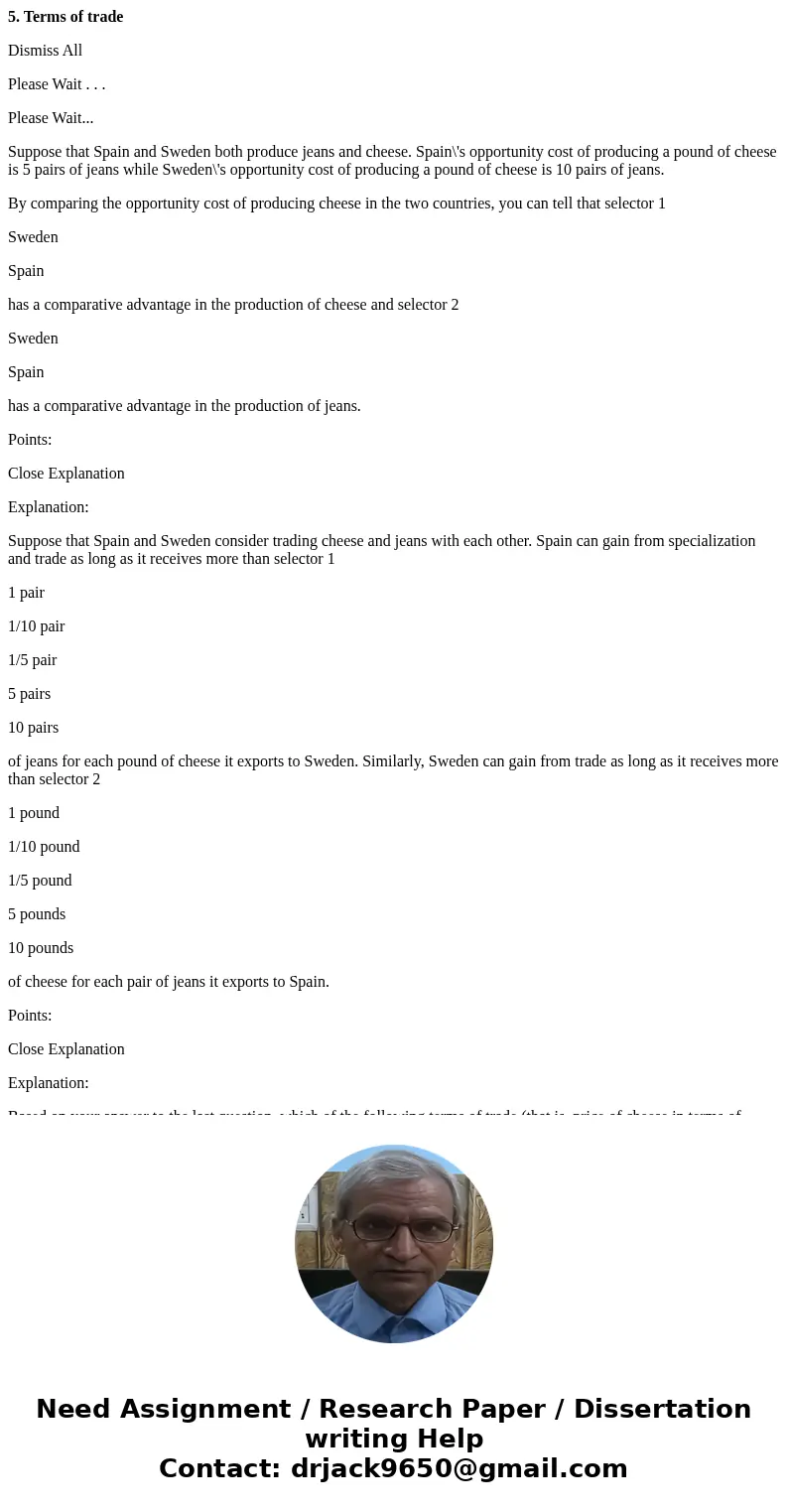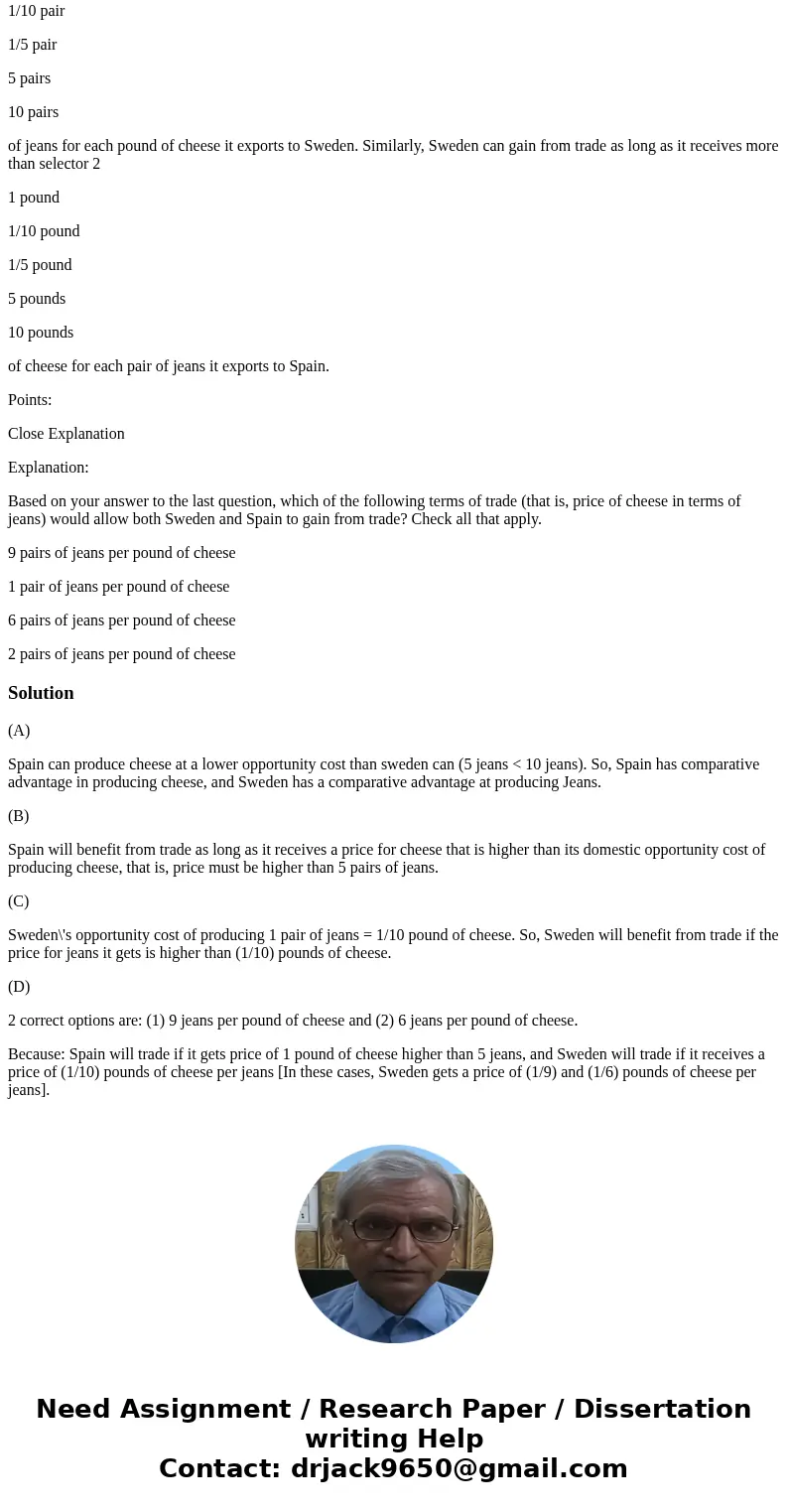5 Terms of trade Dismiss All Please Wait Please Wait Supp
5. Terms of trade
Dismiss All
Please Wait . . .
Please Wait...
Suppose that Spain and Sweden both produce jeans and cheese. Spain\'s opportunity cost of producing a pound of cheese is 5 pairs of jeans while Sweden\'s opportunity cost of producing a pound of cheese is 10 pairs of jeans.
By comparing the opportunity cost of producing cheese in the two countries, you can tell that selector 1
Sweden
Spain
has a comparative advantage in the production of cheese and selector 2
Sweden
Spain
has a comparative advantage in the production of jeans.
Points:
Close Explanation
Explanation:
Suppose that Spain and Sweden consider trading cheese and jeans with each other. Spain can gain from specialization and trade as long as it receives more than selector 1
1 pair
1/10 pair
1/5 pair
5 pairs
10 pairs
of jeans for each pound of cheese it exports to Sweden. Similarly, Sweden can gain from trade as long as it receives more than selector 2
1 pound
1/10 pound
1/5 pound
5 pounds
10 pounds
of cheese for each pair of jeans it exports to Spain.
Points:
Close Explanation
Explanation:
Based on your answer to the last question, which of the following terms of trade (that is, price of cheese in terms of jeans) would allow both Sweden and Spain to gain from trade? Check all that apply.
9 pairs of jeans per pound of cheese
1 pair of jeans per pound of cheese
6 pairs of jeans per pound of cheese
2 pairs of jeans per pound of cheese
Solution
(A)
Spain can produce cheese at a lower opportunity cost than sweden can (5 jeans < 10 jeans). So, Spain has comparative advantage in producing cheese, and Sweden has a comparative advantage at producing Jeans.
(B)
Spain will benefit from trade as long as it receives a price for cheese that is higher than its domestic opportunity cost of producing cheese, that is, price must be higher than 5 pairs of jeans.
(C)
Sweden\'s opportunity cost of producing 1 pair of jeans = 1/10 pound of cheese. So, Sweden will benefit from trade if the price for jeans it gets is higher than (1/10) pounds of cheese.
(D)
2 correct options are: (1) 9 jeans per pound of cheese and (2) 6 jeans per pound of cheese.
Because: Spain will trade if it gets price of 1 pound of cheese higher than 5 jeans, and Sweden will trade if it receives a price of (1/10) pounds of cheese per jeans [In these cases, Sweden gets a price of (1/9) and (1/6) pounds of cheese per jeans].


 Homework Sourse
Homework Sourse